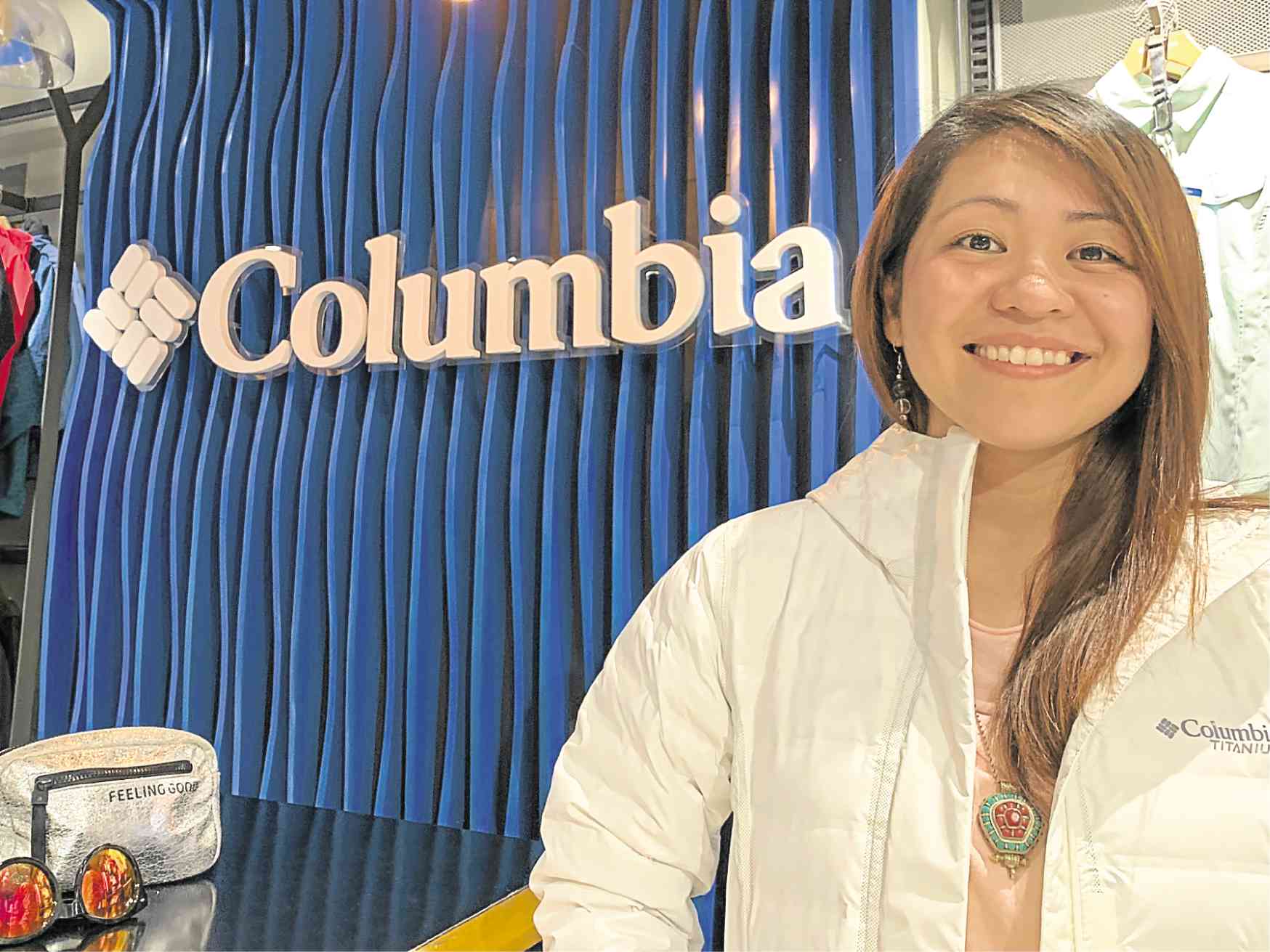Back to the trenches: Coat, outdoor brands reclaim travel adventure
Tiffany Batungbacal is the assistant vice president of Primer Group, a conglomerate with presence in 13 countries. She manages multi-concept stores R.O.X. and Grind and other brands in Primer’s adventure portfolio including The North Face, Columbia, Salomon, Quiksilver, Roxy and DC, among others. Batungbacal, also the Mansmith Young Market Masters Awards winner of 2015, shares a new product category.
Q: Travel adventure market was practically a new category in 2013 in the Philippines. How did this concept come about?
A: Around 2010, Columbia Sportswear PH was in a difficult position … Our inventory coverage was high and there were a lot of new players and indirect competitors entering the outdoor market. We were forced to reassess our business and our position in the industry.
At that time, Columbia was known as a “hiking brand.” People went to our store to buy outdoor apparel and waterproof jackets. That meant we had business around six months of the year, or from March to August. The challenge was how we could make the brand relevant to a wider audience 12 months of the year.
We had a simple survey done to understand our consumer better. One of the insights that really stood out was that almost all of our consumers ticked travel as a hobby. “Travel adventure” was just a concept at that time.
Article continues after this advertisementSelfies or bloggers weren’t as mainstream as they are today. In fact, Instagram was just launched in 2010. Budget fares were just picking up and we didn’t know how long [airlines] would be able to sustain their promotions. Even if the category was still in its infancy stage, we felt travel adventure was a concept we could develop and own.
Article continues after this advertisementThe team thus developed the “Trying Stuff” campaign. We localized the global communication to include travel [and other very Filipino quirks] and not just outdoor activities so that it would resonate to a broader audience.
For us to own the “travel adventure” category, we needed to make our brand relevant to the consumer. While it was important to have a strong marketing campaign surrounding travel adventure, it was equally, if not more important, to have the right product range in our stores.
When we identified the “new” market we were chasing, we decided to shift our buy from spring to fall. That meant reallocating a portion of our budget from spring outdoor apparel to more winter wears and accessories. We also took a risk in buying less entry-level fall/winter products, which at that time, were our volume drivers and focused on more technical and better/best stories.
Fast fashion was at its peak then and was a “disruptive” force in the outdoor and action sports industry with it’s low prices, aggressive promotions and fast turnover of products. We did not want to get into a price war with them.
So we decided to own the innovative DNA and focused our resources on the more technical mid- to high-level [stock keeping units].
We also developed a curriculum that had a theoretical and experiential component that allowed our sales associates to experience firsthand our products in challenging and extreme environments so they themselves can attest to the technologies of the products.
In our stores, we created simple and straightforward “retail-tainment” efforts that highlighted how the technologies worked. We organized small- and large-scale activities that gave our customers reason to buy our products (tours, races, climbs, etc.).
Aside from adjusting our buys and focusing on innovation in all our marketing initiatives, we stopped looking at what our competitors were doing. We focused on our strengths, weaknesses and opportunities. The mistakes we made in the past were because we were listening to our competition and not to our consumers.
Retail was evolving and we had to be one step ahead. To be ahead, we had to be forward-looking and listening to both the consumers and the best practices of different industries.
Q: How did you know that you were gambling on the right concept for market development?
A: We didn’t immediately know that it would work. If we based the success on the first few initiatives or months, we would have given up on the first year.
We had to understand both the small wins and the failed efforts. It was critical from the beginning that we knew we would not be able to turn the business around overnight.
We had targets for every campaign. We had a target every six months. We stayed focused and agile with those set targets in mind.
Q: How different is the travel adventure market now from when it started?
A: The travel adventure consumer is now more demanding. Their experience in travelling around the world has made them more critical of what they need.
Products have to be both functional and fashionable. They want to be Instagram-ready.
This is good for our brands. Consumers now understand and appreciate why our products are more expensive than fast fashion items. Having a winter coat that is fashionable, retains heat, lightweight and quick dry now has more value. —CONTRIBUTED
